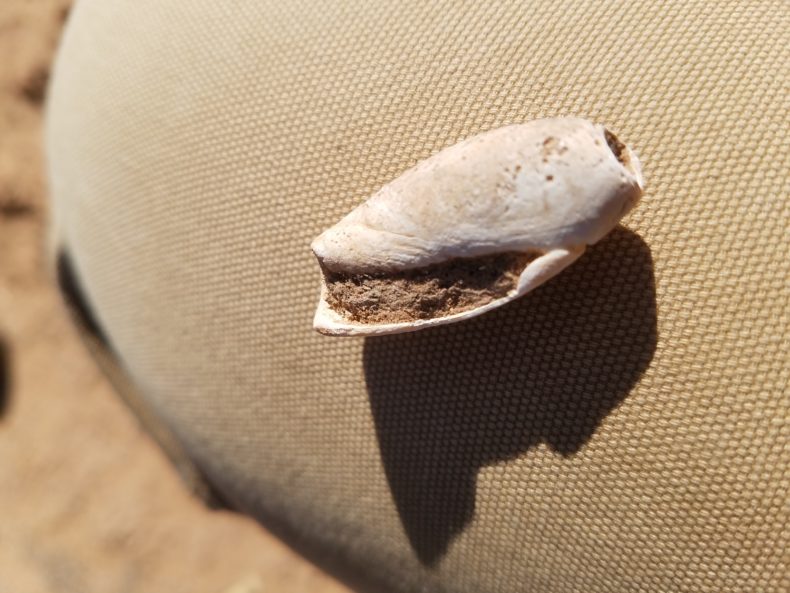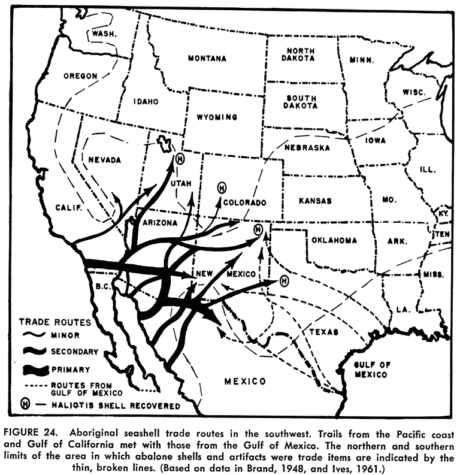 I was snooping around an old uranium mill the other day in southern Utah, taking advantage of an unusually warm January day in the desert to explore washes, ridges, and places where I could hunt for artifacts. You’ll find here glass bottles, metal tags, and pieces of machinery. It was a field mill, looked like 1950s by the decay. No bigger than a one-bedroom house, it had been reduced to some crackled concrete walls and durable trash, glass, plastic, metal. Bolts, broken tea cups, bottle caps. It had been built near a steep gully above a dry wash, and its ruins were crumbling into sandy, ashen soil.
I was snooping around an old uranium mill the other day in southern Utah, taking advantage of an unusually warm January day in the desert to explore washes, ridges, and places where I could hunt for artifacts. You’ll find here glass bottles, metal tags, and pieces of machinery. It was a field mill, looked like 1950s by the decay. No bigger than a one-bedroom house, it had been reduced to some crackled concrete walls and durable trash, glass, plastic, metal. Bolts, broken tea cups, bottle caps. It had been built near a steep gully above a dry wash, and its ruins were crumbling into sandy, ashen soil.
In this dark soil, instead of prospector artifacts, I began finding sherds of pre-Columbian pottery, some painted with lines of black paint on white clay. This was Pueblo ancestry, between 800 and 1,000 years ago, shattered pieces of jar necks and bowls from a cliff- and pithouse-dwelling people who still grow corn in the desert mesas and riversides of northern Arizona and northern New Mexico.
The mill had been built on a prehistoric kiln site, ground still discolored from the number of fires that happened here, ceramic pieces broken and left around as temper and trash. Sticking out of the soil near the base of a brushy sage was the end of a sea shell. I pulled from the ground the neat little capsule of an olivella shell. I hadn’t seen one of these in years. Last time I remember was a cave in southwest Arizona, a hundred miles from an ocean. These kinds of shells were transported across the Southwest, and went on to Texas and Oklahoma. They were moved by foot, carried in satchels, baskets, and woven cotton bags, some made on looms and given intricate colors and patterns.
The olivella in my hand was a type that would come from either southern California or high in the crotch of the Sea of Cortez between Baja and mainland Mexico.
Trade routes run through the desert, paths marked with broken ceramic vessels and the occasional lost or discarded shell. Many ended up in irrigation-mound societies living in the place of modern-day Phoenix. Here, artisans cut and polished the shells, turning some into bracelets, some to ankle jinglers. From there, they continued up into the pueblos of the Colorado Plateau, trade items for upper Arizona and the blistered utopias of southern Utah. This shell ended up at a kiln site on a flank of the Abajo Mountains.
The closest beach to the shell is the Sea of Cortez around Puerto Peñasco, Mexico, 500 walking miles to the southwest. The California coast is a hundred miles farther. Both locations have these olivella shells.
I’ve been gradually exploring these shell routes for a couple decades, a personal fascination, focusing my time between Arizona and Mexico, near the source where abandoned shells are easier to find on the ground. To the north, as you’d expect, they are more dispersed. The closer to the sea, the more shells and pieces of shell you find. In northwest Mexico, state of Sonora, a massive, black volcanic field with hundreds of cinder cones stretching 30 miles wide stands across the desert, and routes stream around it, the shell bone-white on lava and dark volcanic sands. Rainwater holes in the rock where people would have gathered water are accompanied with pecked images of shells. On the west side of this volcano, a couples days walk from the sea, there are wash bends littered with bits of shell and the weathered, centuries-old bones of sea turtles, their meat carried inland.
For days with friends I forayed across dunes and craters of lava, setting backpacking camps on the flanks of the Sierra Pinacate. Fawn colored dunes stretch from here to the sea, a dry sea in themselves, some of the dunes eight hundred feet tall. Shells are weathered out of the sand, lonely and scattered by winds and erosion throughout the dunes.
At the edge of this sand sheet, we found shell mounds from mollusks people acquired for eating, not for trading. Among them were campfires that had been preserved by dunes and only recently exposed. Charred bones of animals lay in the hardened ash lenses. One appeared to be the cooked jaw of a badger. Each fire had a ceramic water olla nearby, now fallen to curved pieces, remnants of rain carried into the desert. You can see where they sorted shells for size and weight, leaving behind those they didn’t want to carry from here to the Phoenix Basin, and from there onto the Colorado Plateau, one left on the dark soils of a kiln in a southern Utah canyon banded with uranium.
The shells led us to the sea. We came out of the desert onto a beach where we dropped our packs, took off boots and walked into shallow turquoise water. Barefoot, I crunched into shells that had rolled and washed up. They were everywhere.
Next week I’m heading back down to the volcanoes in Mexico to camp for a few days, maybe snoop around for old shells. I suppose it would have been thoughtful of me to grab that olivella from Utah, knowing I was coming this way; bring it back down, give it another leg of its journey. That, of course, would be illegal in many ways. I left it there, stuffed it back in the ground where I found it, a story from far away.
Photograph by the author
Figure 24 Courtesy of Scripps Institution of Oceanography Library; http://scilib.ucsd.edu/sio/
http://content.cdlib.org/view?docId=kt738nb1zx&brand=calisphere from “California abalones, family Haliotidae,” Keith W. Cox, 1962.
I found these shells in a dwelling in SE Utah in the 1970s…